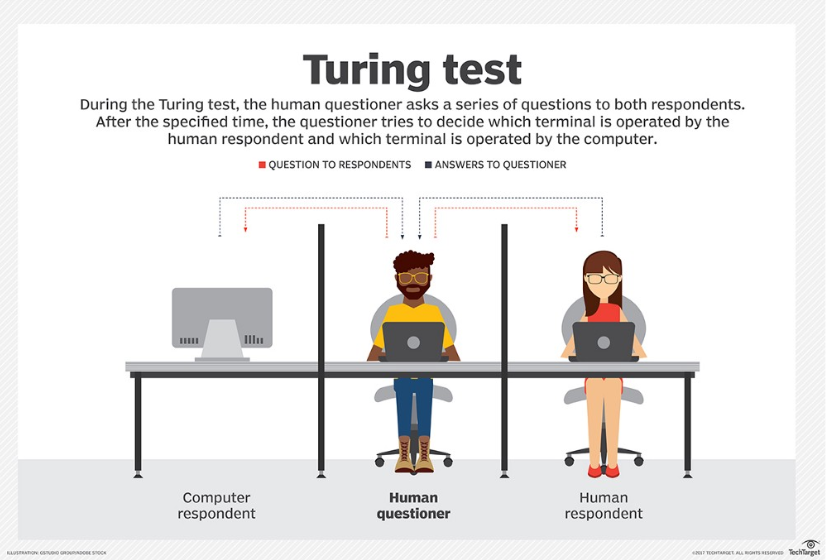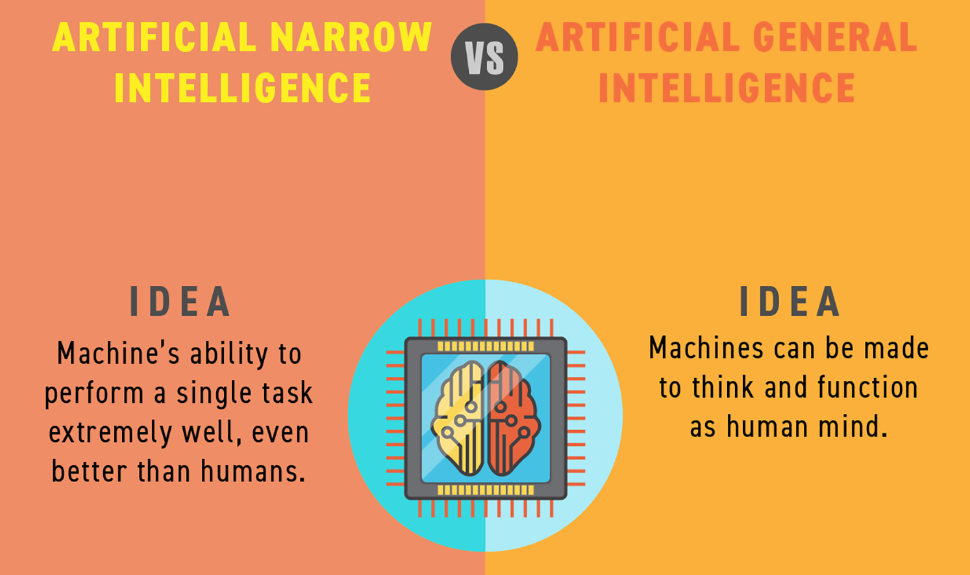What is AI?
Turing test, games, hype, narrow vs general AI.
This post is part of the series A Primer on Artificial Intelligence.
Want to get notified about new posts? Join the mailing list and follow on X/Twitter.
To appreciate the complexity of this question, first ask yourself: how would you define AI?
Perhaps, you might suggest that AI consists of machines that can think as humans do. But what does it mean to think as humans do? Surely, you must think in order to multiply large numbers in your head – but it would be dissatisfying to award a computer the title of AI based solely on its ability to multiply those same numbers.

A computer that can multiply large numbers.
A more satisfying answer, proposed by Alan Turing in 1950 and later known as the Turing Test, is that a machine could be said to be thinking if it could carry on a text conversation that was indistinguishable from a conversation with a human being. To pass a well-designed Turing test, a machine would have to use natural language, reason, have knowledge, and learn.

Source: techtarget.com.
Of course, building a machine that converses like a human is a lofty goal, so AI researchers started with a more approachable goal of building a machine that plays games like a human. In the 1950s and early 1960s, they succeeded in building checkers and chess programs of sufficient skill to challenge a respectable amateur.
In the following decades, AI advanced to the point of beating the world champion in the world’s hardest board game, describing pictures in natural language, and holding simple goal-directed dialogue (such as in virtual assistants). While AI is still far from passing a well-designed Turing test, much progress has been and will likely continue to be made.
That being said, progress in AI is often surrounded by hype that greatly inflates people’s perceptions of the capabilities of AI. To understand the cause and inaccuracy of such hype, we highlight a distinction between two forms of AI: general AI and narrow AI.
General AI is the kind of AI that we’ve been thinking of from the beginning – the intelligence of a machine that could successfully perform any intellectual task that a human being could. General AI appeals to the notion of AI having some kind of consciousness, sentience, or mind.
Narrow AI, on the other hand, is a more applied – and at least presently, realistic – form of AI. Narrow AI is focused on one narrow task, such as playing a board game, classifying parts of an image, or matching input questions to a set of predefined responses.

Source: Analytics India Magazine.
Much of the hype surrounding AI is due to people confusing narrow AI with general AI. Just because a computer program is able to defeat the world champion in a board game, does not mean that there is any chance of the computer program developing a cure for cancer or developing a desire for world domination.
This post is part of the series A Primer on Artificial Intelligence.
Want to get notified about new posts? Join the mailing list and follow on X/Twitter.